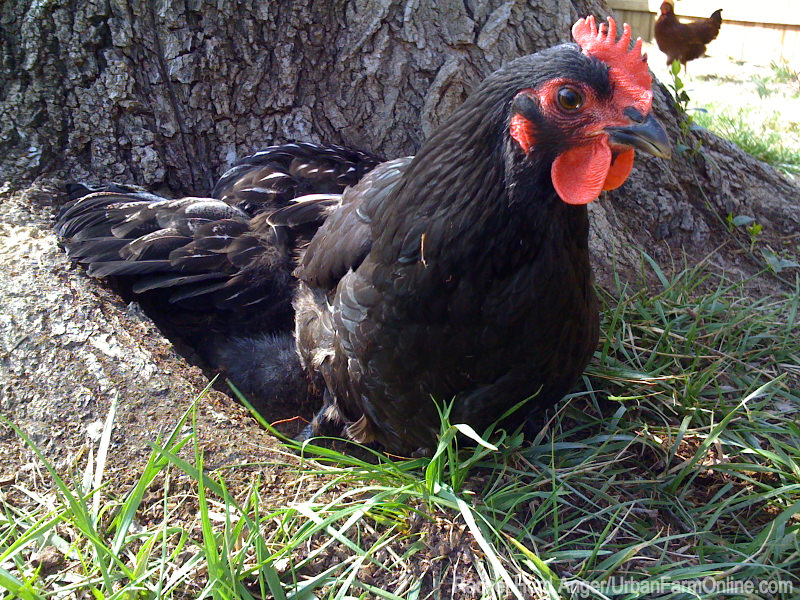

Is there a certain type of plant that attracts mites/lice. Which plants should I steer away from growing to deter inviting them to the coop? –D&R Poultry
Fortunately for us garden-loving chicken keepers, plant parasites and chicken parasites are two completely different beasts. Plants attract the organisms that feed on the plants, while scaly leg mites and lice are parasites that feast on blood. This means they’re attracted to your chickens as a food source, not to the plants growing around your flock.
Scaly leg mites burrow their way under the scales of chickens’ legs, and lice live between feathers near the skin. Once these organisms turn your chickens into cozy new homes, they’ll continue to feed and breed, and they won’t go away without your intervention. The problem with these blood-eating parasites is that they cause discomfort, pain and sustained blood loss that leads to anemia. Like a domino effect, anemia leads to ill health, lower egg production and weight loss. A mite infestation, especially, can cause crippling of the legs and even death.
Because we know that the animals are attracting the parasites that feed on them, we need to focus on prevention. Here are some ways to help keep your chickens lice- and mite-free.
1. Dust Bathing

Make sure your flock has access to a dust bath. As birds kick dust and dirt between their feathers, the particles absorb skin oils, creating a barrier against the skin that keeps pests away.
If your chickens can’t dig their own shallow baths in a dusty spot on your property, give them a space of their own. The best dust bath ingredients are sand, fine dirt and wood ashes. Peat moss is great, too, because it’s very light and easy for the birds to kick around. Any dust bath you can provide is better than no dust bath at all. Choose two or three ingredients to mix together or let your flock mix it. The chickens will have a blast.
Some dust-bath recipes call for diatomaceous earth as an ingredient, but I don’t recommend using this natural pest control in a dust bath. While effective, DE is not safe for either humans or chickens to inhale. Sprinkling it in your coop is fine, but don’t put DE anywhere chickens kick up dust into chicken-sized clouds.
2. Isolated Feeding
While your flock might be parasite-free today, a wild bird stumbling onto your chicken feed is the most likely to bring parasites to your flock. I have one hen that chases wild birds away, but the rest commiserate with their high-flying cousins like they’re part of the same avian class.
Keeping feed isolated has been one of my biggest problems as a chicken keeper. Everybody, from wild birds to rodents, is hungry. Wild animals don’t have access to the feed while the chickens are confined to the coop and run, but when the flock is free ranging, the feeder is like a buffet.
Before spring, I’d like to build a weighted chicken feeder. This is the kind that has a perch of sorts that opens a lid when the chickens stand on it. Old chickens can learn new tricks, but making the time to build one has been the only thing holding me back on this. For what it’s worth, if I had a weighted feeder, that’s what I would recommend for keeping wild birds and rodents out of your feed supply and away from your flock.
If you don’t or can’t free-range your chickens, make sure your coop and run are secure enough that rodents and wild birds can’t find a way in. If you find holes, button them up immediately.
3. Plant a Chicken Garden
Go ahead and plant what you like around your chickens, making sure that what you plant isn’t poisonous to the flock. Taller plants and shrubs provide safe cover when free-ranging, and they make great places to forage and dust bathe. Some plants and flowers are edible and healthy for chickens to eat. Garden for yourself, and plant something to share. The book Free-Range Chicken Gardens, by Jessi Bloom, has a lot of beautiful ideas that are flock-friendly.
Instead of focusing on what might bring pests to your flock, focus on what will keep them away. The healthier and happier they are, the less likely they’ll be affected by parasites and illness.
Read more of Chicken Quarters »




